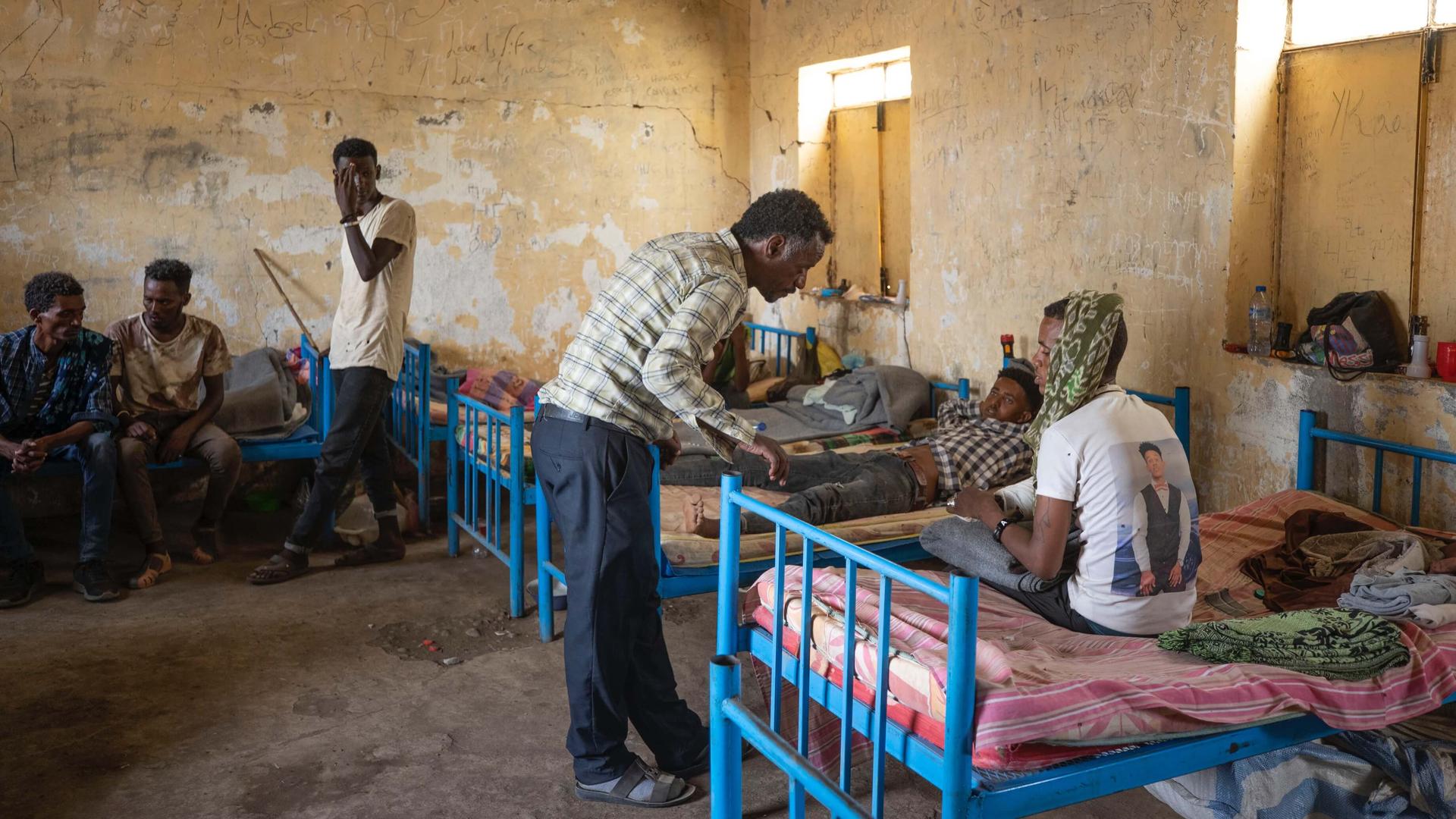It’s now been two months since the conflict in Ethiopia’s Tigray region began between the country’s once-dominant Tigray People’s Liberation Front (TPLF), and the federal government of Ethiopia.
While reports of fighting in the region continue, the government has declared an end to active military operations and has now turned its head to scaling up humanitarian activities.
In a recent op-ed, Prime Minister Abiy Ahmed acknowledged the “heavy cost” of the conflict — which led to the destruction of essential infrastructure, communications shutdowns and countless displacements — and said the government will take steps to help the region return to normal.
Related: Tensions mount at Sudan-Ethiopia border as refugees flee Tigray conflict
But normal seems impossibly far away, especially for the more than 53,000 Ethiopians who fled to neighboring Sudan since the onset of the conflict.
Fisha Gibreselassie, a refugee who arrived at Um Rakouba refugee camp in Sudan, has no intention of returning home anytime soon.
“I would never go back unless Abiy Ahmed is ousted or resigns,”said Gibreselassiethrough an interpreter, who fled to Sudan at the onset of the conflict in November.
Sitting on a stool in 90-degree weather, he fries a doughnut called bombolino, a taste of home that is in high demand at the camp, and a small source of income for the refugee.
Gibreselassie was working as a mechanic in the town of Adebay, in Tigray, before the conflict forced him to flee with his 11-year-old son, Sami.
He recalls how, on the way, the group they were traveling with encountered Ethiopian federal troops along with soldiers from neighboring Eritrea. The Ethiopian government denies receiving assistance from Eritrean soldiers, however.
“They shot my 11-year-old son twice. He was bleeding. I pleaded with them to let me take him to a doctor. But they said to let him die.”
“They shot my 11-year-old son twice. He was bleeding. I pleaded with them to let me take him to a doctor. But they said to let him die,” Gibreselassie told The World.
Related: Ethiopians from conflict-torn Tigray region say they face ethnic profiling
In a December address to Ethiopia’s Parliament, Prime Minister Abiy claimed that no civilians were killed in weeks of active military operations.
Many Ethiopian refugees in Sudan told The World otherwise.
“How could he kill a young boy like my innocent young boy? Even if he didn’t kill him, his military killed him,” cried Gibreselassie, who said he fled to Sudan soon after burying his son.
For weeks, he slept out in the open in the camp, which struggles to meet the basic needs of more than 20,000 refugees who now live there.
The UN refugee agency and humanitarian organizations have raced to scale up resources at the refugee camps, setting up temporary homes, schools and clinics to address what has been the largest influx of refugees to eastern Sudan in two decades. Most arrived with nothing.
“I left with only with a shoe, a shirt and pants. … I worked for more than 20 years but am left with nothing.”
“I left with only with a shoe, a shirt and pants,” said Teum Haile Selassie, a Tigrayan doctor living at the Hamdayet refugee transit center, hours away from Um Rakouba.
Haile Selassie moved from Ethiopia’s capital, Addis Ababa, to the Tigrayan town ofMai-Kadra, in October of this year, and used his 20 years of medical experience and a lifetime of earnings to set up a private clinic there.
A month later, the conflict began.
“I worked for more than 20 years but am left with nothing,” Selassie said.
Now, he relies on the local Sudanese community, Sudanese Red Crescent, and other aid organizations to meet his basic needs. Still, Selassie worries most about the lasting psychological effects the conflict will have on Ethiopians.
“I have seen a genocide I should not have seen in my life,” he said, staring wide-eyed in shock as he remembered the grisly massacre that occurred in Mai-Kadra in November.
“The social crisis has become more severe than the wound or disease,” continued Selassie, who says he was targeted for being Tigrayan as he fled by foot from Mai-Kadra.
According to the Ethiopian Human Rights Commission, ethnically Tigrayan youth militia, supported by members of the local administration in Mai-Kadra, killed more than 600 people they had identified as ethnic Amhara and Wolkait.
Prime Minister Abiy has accused the TPLF of operating behind the scenes in bouts of ethnic violence during the past two years in office.
However, all parties in this recent conflict, including Ethiopian federal forces and allied Amhara militia, have also been accused of ethnically motivated violence and looting.
At a local Sudanese health clinic in Hamdayet, health workers are trying to address both the physical and mental health needs of refugees who have arrived there tired and hungry.
“The very first thing we can do, is psychological first aid,” said Jason Rizzo, project coordinator at Doctors without Borders, which supports the clinic. “Just being present and being there to talk to people. Having someone that refugees can talk to.”
But Selassie, the doctor, thinks it will take 10 to 20 years for Ethiopians to recover from the conflict.
“The destroyed property will eventually be replaced,” said Selassie. “But the psychological trauma remains.”
Our coverage reaches millions each week, but only a small fraction of listeners contribute to sustain our program. We still need 224 more people to donate $100 or $10/monthly to unlock our $67,000 match. Will you help us get there today?
